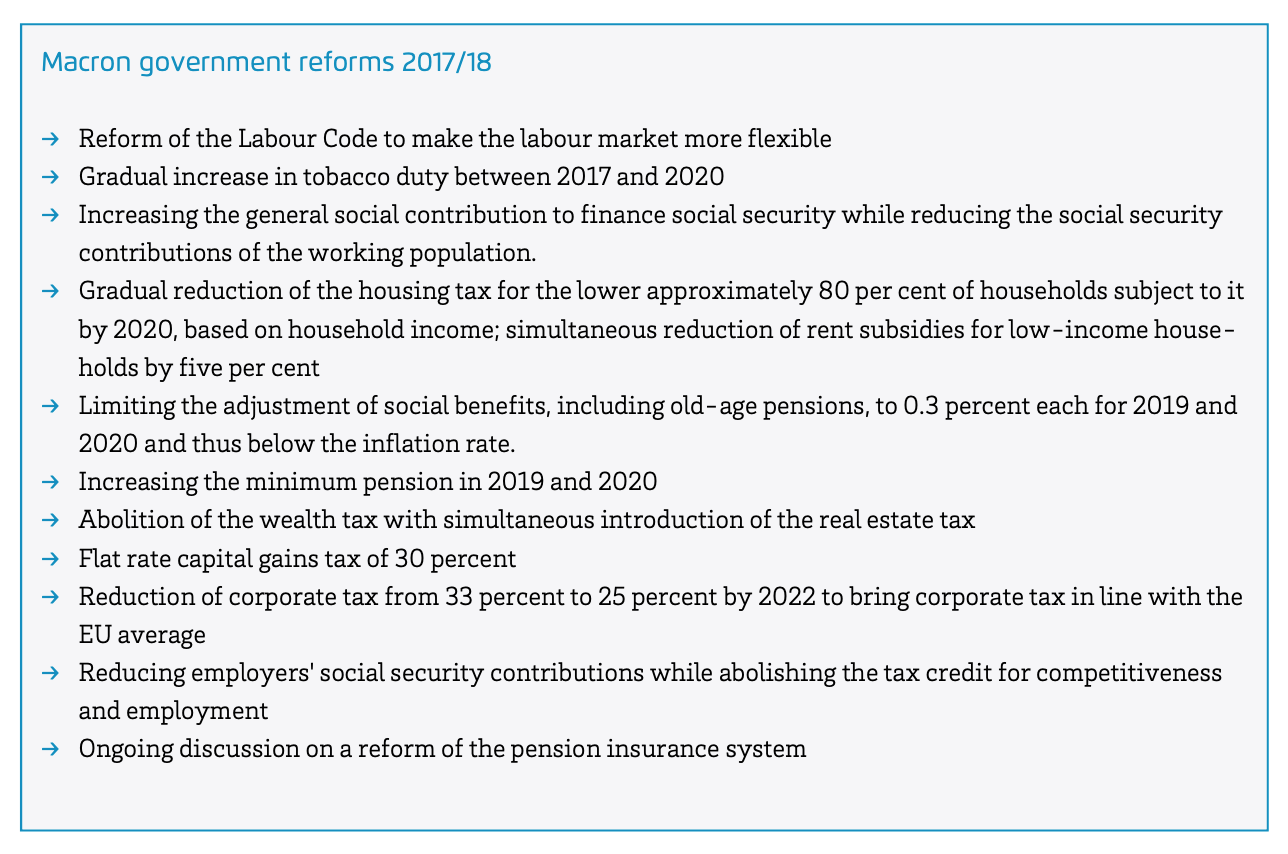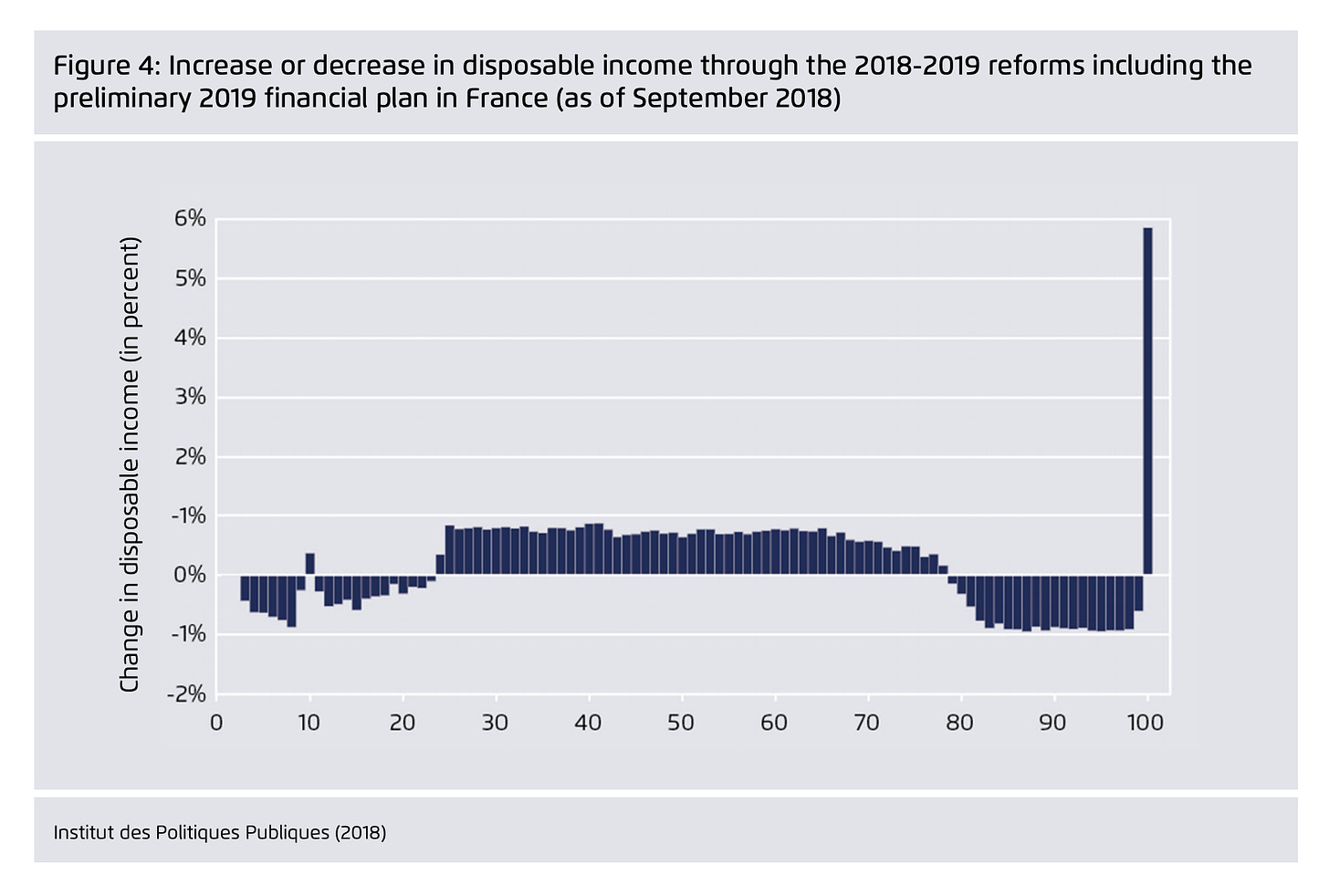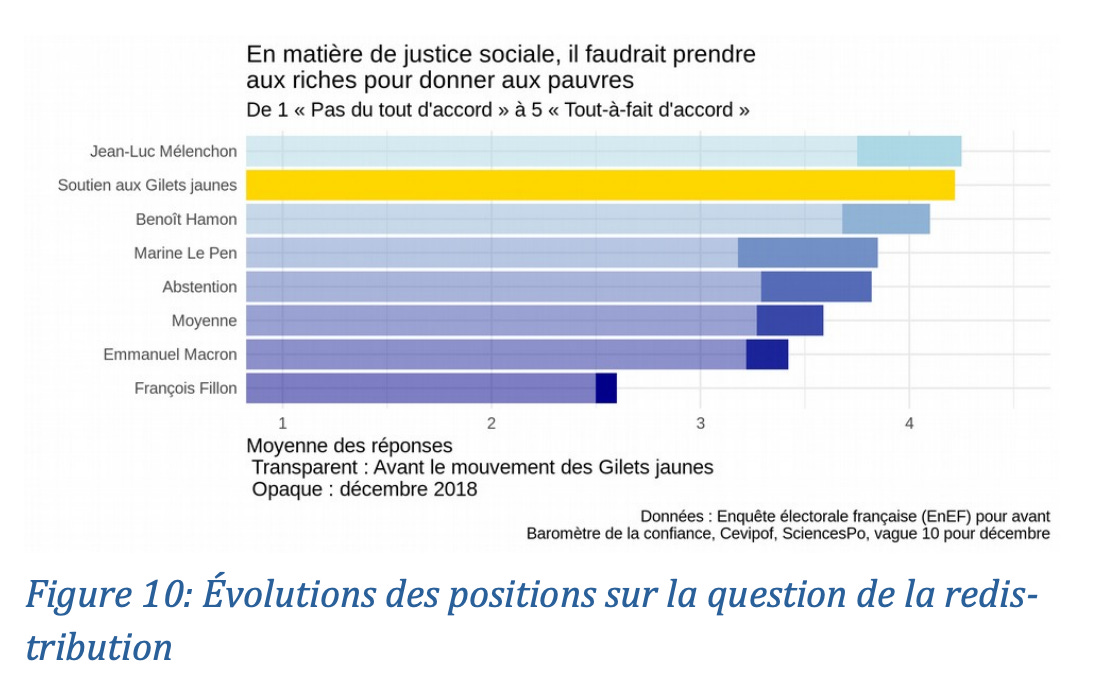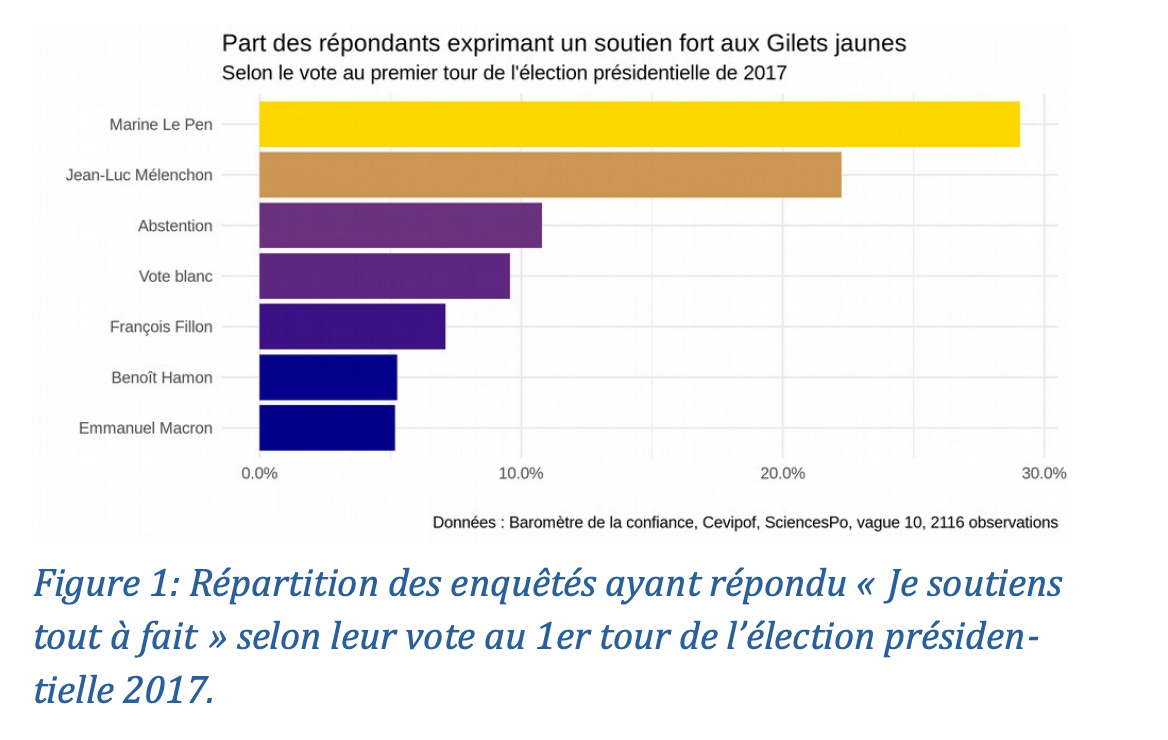This week’s Newsletter is about the storm brewing over Europe’s environmental policy, carbon prices and the long shadow thrown by the 2018/9 Yellow Vest protests. Who were the protestors and their supporters? What triggered the protests? How is this episode reverberating through climate politics in Europe three years later? … but first, a quick personal note.
You are invited to become not just a subscriber to Chartbook Newsletter, but a supporter of the project.
Chartbook Newsletter is a blast to write. But it is also very time-consuming. To see where it should fit in my portfolio of other activities, I am launching a paid subscription model.
Don’t panic. If you like the newsletter but can’t afford a paid subscription, I get it. You don’t have to do anything. You will continue to receive Chartbook, as before. But, if you can afford it, if you think the content is valuable, if you would like to support the mission, or simply buy me the equivalent of a cup of coffee once a month, there are three options:
The annual subscription: $50
The standard monthly subscription: $5 monthly - which gives you a bit more flexibility.
Founders club: If you really love Chartbook Newsletter, or read it in a professional setting in which you regularly pay for subscriptions, please consider signing up for the Founders Club with a recommended contribution of $120 annually, or another amount at your discretion. Good karma guaranteed.
To support the project please click here:
What are you contributing to? The continuation of Chartbook Newsletter as you already know it. A bunch of great content c. 40 post per annum. A list of forthcoming projects and a full-length appeal can be found in the last mailing.
A HUGE thank you to everyone who has already hit the subscribe button. Your support is a great encouragement.
******************************************
Down to business …. In 2021 a specter is haunting Europe - the specter of the Gilet Jaunes - the Yellow Vest protest movement that disrupted French politics in 2018/9.
The Gilet Jaunes are not back in person. But their phantom stalks the corridors of power. Their return has been provoked by the announcement on Wednesday 14 July of “Fit for 55”, the EU’s ambitious package of climate policies. A key part of the package is to extend Europe’s Emissions Trading System (ETS) to petrol and diesel fuel as well as to gas and oil for domestic heating. The ETS is a cap and trade system in which permits to emit CO2 are traded between polluters. The idea is to set a cap on the quantity of emissions and then to force emitters to bid up the price. The smaller the “pollution budget” the higher the price and the greater the incentive to find cleaner ways of doing things. The ETS has been operating since 2005. Driven by the expectation that Europe is getting serious about the climate, permit prices have risen above 50 euros per ton of carbon.
Source: Vattenfall
So far, ETS pricing has been applied to electricity generation and industry, sectors that are “behind the scenes”. The drama right now, is that Brussels is proposing to extend a similar system to petrol at the pump and to domestic heating bills. That step was taken in Germany in 2020. So far there have been no major ructions. The German tax is modest - 25 euros per tonne, which adds 6-7 cents to the price for a liter of petrol or diesel. Exactly how quickly this will escalate is a matter of hot debate in Germany’s election, but the principle is accepted.
The reason why it is so crucial to raise some kind of tax on petrol and diesel is that since 1990, transport is the one sector of European emissions that has actually risen, by c. 33 percent. If Europe is to reach its target of 55 % emissions reductions by 2030 that has to be reversed. The Fit for 55 package includes measures that will end the sale of new internal combustion engine cars and trucks in Europe by the 2030s. To accelerate the shift and raise fuel economy in the existing fleet, a carbon tax is necessary. Petrol is already very heavily taxed in Europe. The problem is that the demand is inelastic. For many people driving is not a choice. Raising petrol and diesel prices thus disproportionately hurts those on lower incomes in suburban and rural areas.
A chorus of opposition is gathering against the Commission’s proposal. National governments, parliamentarians, unnamed senior diplomats, national officials do not simply oppose the idea. They are warning that any attempt to raise prices, risks triggering an outbreak of protests like the Yellow Vest protests that rocked France and the government of President Macron in 2018-2019. The message is amplified by journalists recycling unattributed comments from inside the Brussels machine and quotes from politicians such as Pascal Canfin, chair of the European Parliament’s environment committee, who, it turns out, represent’s Macron’s party.
To be clear, those making the warnings are not themselves protestors, nor, on the whole do they represent constituencies involved in the protests. The Gilet Jaunes have become political folklore. They are the boogyman, a knock down argument against the Commission’s proposals. There are many politicians in Europe in 2021 who fervently wish that the issue of carbon pricing would simply go away. If talking about the Gilet Jaunes serves that purpose, so be it. But to gauge the actual risk of a repeat of 2021 and the motives of those who are summoning the boogyman, it helps to go back to what actually happened in 2018-9.
In November 2018 Macron’s government announced that it would be raising the tax on fossil fuels from 44,60 euros per tonne to 55 euros as of 1 January 2019. The French carbon levy was first introduced in 2014 under François Hollande’s socialist Presidency. It was France’s big climate policy initiative ahead of the global climate conference hosted in Paris in 2015. It was, from the outset, an escalating tax. Starting at 7 euros per tonne the target was to reach 100 euros per tonne by 2030, within striking distance of the figures discussed by climate economists. Macron’s increase was the latest in the schedule. What was not scheduled was the public reaction.
Following a facebook appeal on November 17 2018 300,000 demonstrators blockaded traffic across France. Though the overall number of protestors never again reached the November 17 peak, the tone of the protests in Paris over the following weeks became ever more vociferous. On December 1 the capital was convulsed by clashes between protestors and the police. Much of the center of the city was boarded up. It was the lockdown before the lockdown.
The violence of the street-fighting in Paris defines the memory of the Gilet Jaunes. All in all by the summer of 2019 1,797 police and gendarmes and 2,448 protesters had been injured. The level of force used by the French police against demonstrators was extreme. An armory of “non-lethal” weapons acquired since 2000 was put to full use. According to a fact-checked summary by Mediapart, 24 protestors lost eyes to rubber bullets. 5 lost a hand. 315 sustained head injuries. The violence was so striking that it attracted the attention of the United Nations. The controversy rumbled into 2020 with tough new legislation pushed by Macron’s government aiming to protect the French police against the circulation of images designed to “cause harm”.
Embarrassed by the chaos, Macon’s government backed away from the escalation of the fuel tax. The climate issue, however, would not go away. In 2019 a Citizens Assembly for the Climate was set up, which in June 2020 delivered a report on 149 measures to address the climate crisis "in the spirit of social justice.” One of these proposals was for a common carbon tax on the border of Europe. In early July 2020 Macron himself took up that call, "If there is to be a carbon tax that is significant from an economic point of view, it must exist first of all at the European level. I will fight for a tax at the borders of Europe, as has been proposed by the citizen’s convention.”
Paris handed the problem off to Brussels. That is a well-tried practice in European politics. The problem is that Brussels sometimes comes back with real measures. The Commission, with the Dutch social democrat Frans Timmermans forging the way and heavy-weight backing from Berlin, has proposed a carbon border adjustment that will tax polluting imports from the rest of the world. The other side of the coin is the comprehensive extension of the ETS.
Unsurprisingly, French voices have led the charge against the Commission’s plans. Corinne Le Quéré, the chair of France’s High Council on Climate, believes there is “absolutely” a chance these policies will spark rebellious public responses. Canfin calls the proposal “politically suicidal”. “I advise Frans Timmermans”, Canfin remarked, “that rather than playing the firefighter, he doesn't play the pyromaniac”.
A carbon tax is regressive say its opponents. It will hurt those on modest incomes most. It will feed populism and ultimately trigger mast protests. On the face of it, that has a degree of plausibility. But is that actually what happened in France in 2018? Who lit the fire? Was it the advocates of carbon pricing who were the pyromaniacs?
Between 2014 and 2018 the effect of the French carbon tax on petrol and diesel was significant. This was particularly so for diesel, the fuel most used by businesses, which had previously enjoyed special tax privileges. The adjustment was made even more painful by the fact that global oil prices were bouncing back from the lows to which they had plunged in 2014/5. In October 2018, a litre of diesel cost more than 1.50 euros, an all time high. In less than three years it had escalated by 50 percent.
Source: Gagnebin, Graichen, Lenck 2019
This was significant, but was it enough to trigger an epic wave of national protest? Hardly! The fuel price was at most the trigger. The increase in the fuel levy took place against the backdrop of a package of “reforms” which amounted to a significant reshuffling of the French welfare and tax system. Macron’s government brought the upheaval on itself.
Source: Gagnebin, Graichen, Lenck 2019
Taken together the combined effect of Macron’s measure was to depress the incomes of the bottom 25 % of the income distribution and to raise them slightly for those in the middle. A squeeze was applied to those between 75 and 99 percent. The only group that benefited to a significant degree were the top 1 percent of the income distribution. They saw a generous 6% bump in their incomes.
Source: Gagnebin, Graichen, Lenck 2019
The diesel price increase may have been the trigger, but, to interpret the Gilets Jaunes first and foremost as a protest against climate policy is to miss the point. The real target was economic distress, inequality and President Macron. In polls done amongst the demonstrators in November, the motivations were clear. “The need to raise purchasing power” was mentioned by 53 percent. 41.6% wanted taxes lowered. 19.9 % were motivated by the maldistribution of wealth. And another 18.7 % mentioned opposition to the government and the President. Climate as such did not figure. Of the 61.5 % of the protestors who identified themselves in conventional left v. right terms, two thirds were of the left. National polling showed that the supporters of the Gilets Jaunes favored redistribution from the rich to the poor to a degree that in the 2017 Presidential election would have placed them somewhere between the socialist Benoît Harmon, advised by Thomas Piketty, and the left populist Jean-Luc Mélenchon.
Question: What is your Position on redistribution? Do you favor taking from the rich to give to the poor?
Source: Note de L’OBE 2019 3
Amongst the French public at large the Gilets Jaunes enjoyed sympathy from both ends of the political spectrum. Between them the far left and the far right accounted for half the total support for the Gilets Jaunes.
Source: Note de L’OBE 2019 3
What the protests exposed was the extreme fragility of Macron’s election success on May 7 2017. At the time, Macron’s victory was hailed as a triumph for a reforming, energetic centrist. But this was a mirage. In the first round of Presidential voting on April 23 2017, the French electorate split into five roughly equal segments, from far left to the far right between Mélenchon, Macron, Fillon, Le Pen and abstentions. Better paid French voters with more education voted for Macron and the reverse was true for Le Pen.
Source: Note de L’OBE 2019 3
What handed Macron the Presidency were not the 24 percent of the vote he scored in the first round, but the anti-Le Pen rally in the second round. Macron’s final tally of 66 percent was deceiving. And this is what the Gilets Jaunes protests exposed. The street protests mobilized an anti-establishment groundswell that in the voting booth was split between left and right. Mapped in terms of income and education, support and opposition to the Gilet Jaunes were polarized, just as the Le Pen and Macron blocs had been in 2017.
Source: Note de L’OBE 2019 3
There is no doubt that the price of diesel was the spark, but what was more broadly at stake was a sense of the unfairness of French society, frustration with the political system and indignation at Macron’s policies. This is not to say that a rapid increase in prices for diesel were not a real issue for working-class families struggling on modest incomes. There are real trade offs between climate policy and social justice that have to be carefully managed. The latest Eurobarometer polling of Europe-wide public opinion is eloquent on this point.
Source: Eurobarometer
Europeans of all backgrounds recognize the climate problem. Climate-skepticism is a fringe position. But whereas for 30 percent of the self-identified “upper middle class” climate is the top concern and another 10 percent name global population, for the self-identified working class those numbers are 12 and 4 percent respectively. For those on lower incomes, poverty and the economic situation come top of the list. The obvious conclusion - it really isn’t rocket science - is that the energy transition must be founded on a social bargain. As Timmermans has put it: ““Very simple, the European Green Deal is going to be just, or there is just not going to be a European Green Deal,” The lesson of the Gilet Jaunes crisis is not that carbon pricing is impossible, but that it has to be done with an awareness of the distributional effects. If you want to adjust energy prices you have to offset the higher costs with redistributive payments to those whose incomes are squeezed most severely. And you have to ensure that those welfare payments are as visible as is the increased costs of driving.
The regressive bias of carbon pricing and taxes is pronounced. But that is not the same as saying that the overall effect is large. Modest redistributive payments financed by the carbon levy itself can even generate a progressive effect. The Commission’s Fit for 55 package is based on a comprehensive modeling exercise that demonstrates precisely this possibility. An energy transition driven by uncompensated carbon levies depresses the incomes of the bottom decile, not by a huge amount, but by a noticeable 3 %. With a suitably designed redistributive system, their incomes can actually be increased.
The Commission proposes a 72.2 billion euro Social Climate Fund to address the regressive impact of energy price increases. Matched by member state contributions that would mobilize 144.4 billion euros to address the issue. That message, however, is being drowned out by Gilet Jaunes fear-mongering. This warping of the discursive field is itself one of the effects of the 2018-9 crisis. “Doing stupid shit", as Obama might have put it, spoils the pitch. Implementing a bad carbon pricing policy as part of an inequitable package of tax and welfare changes makes it harder subsequently to make the positive case for a well-designed policy. The folks who objected to the original bad policy will be harder to convince of the merits of a better policy and neutrals will change their mind. Risk-averse politicians turn cautious. Anyone who opposes carbon pricing for other reasons has all the rhetorical ammunition they need.
This shows up with depressing force in the French opinion polling evidence. In early 2018 when a representative sample of French people were offered the proposal of a carbon tax combined with an offsetting carbon bonus, 49 percent approved. After the Gilets Jaunes crisis, support fell to 10 percent. Not only had the balance shifted, but the sample were now resistant to new information. Despite evidence to the contrary, the respondents continued to insist the idea was unfair. They had lost trust in the entire proposition.
There are no do-overs in politics. Screwing up does lasting damage. It is nevertheless ironic that the Commission for all its pains now faces a chorus of Macronites accusing them of pyromania and shouting: “How could you propose such a thing? Don’t you know it’s regressive! Remember the Gilets Jaunes …”. The idea that one might learn from history and might in fact have taken appropriate precautions, does not get a hearing. Best not even to try. Nor can the Commission alone take forceful action. Welfare policy remains the jealousy guarded prerogative of Europe’s nation states. And the revenue generated by the carbon trading system is being eagerly eyed by them. There is no guarantee that they will actually return the payments to their citizens who need it most.
The case for progressive redistribution through carbon levies and offsets can be made. But it will take conviction and political courage. And as luck has it, who will be presiding over the European Council when the proposals have to be argued for? France, with Emmanuel Macron facing an election year! The spring of 2022 is going to be interesting in European politics.












